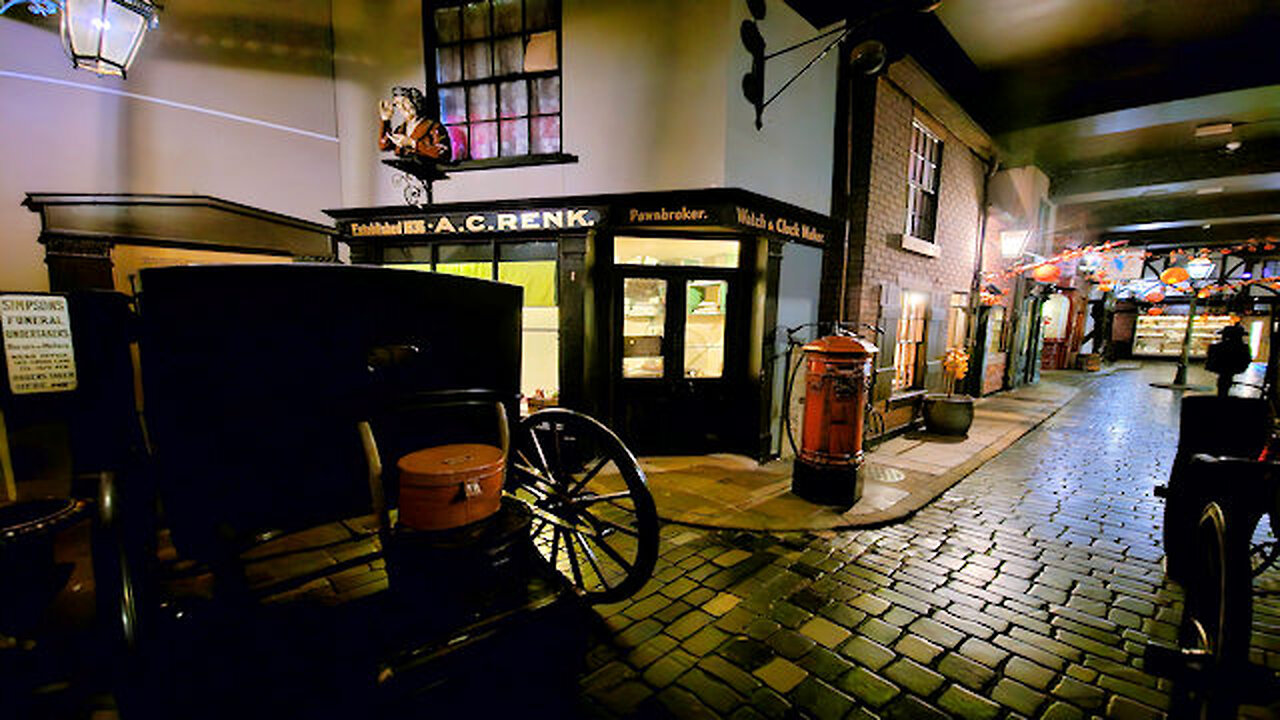Premium Only Content

Victorian Street, Lark Hill Place (Photography)
Lark Hill Place is named after the mansion house built on this site by James Ackers in the 18th or 19th century. Look out for the side street at Lark Hill Place that is named after him.
The Lark Hill estate was purchased by public subscription for a park in 1846. The park was named after Sir Robert Peel who donated £1,000 of his own money towards the purchase. Joseph Brotherton, Salford’s first Member of Parliament and a key voice behind the Museums Act of 1845, encouraged the Mayor of Salford to establish a museum and library in Lark Hill mansion house. In 1849, Queen Victoria and Prince Albert agreed to be patrons of the Royal Museum and Library. It was founded through further donations and in 1850 it opened as England’s first unconditionally free public library.
People flocked in; visitor numbers totalled to nearly 890,000 in 1857. The building was quickly expanded, with the addition of North, South and Langworthy wings. In 1935 the original Georgian mansion was found unsafe. It was closed, demolished and replaced with the current wing.
By 1945, the City Council began to rebuild Salford, bringing housing up to modern standards and replacing the terraced houses that had characterised the area from the 1870s. In 1955, the museum re-created a small street from salvaged features from houses and shops that would have otherwise been demolished. This resulted in Lark Hill Place, a street which re-captures past living conditions in Salford by displaying products and objects from daily life.
The street is constructed with original shop fronts and objects. The glass is very fragile so please do not lean on it and take care on the low curb that runs around the whole street. We keep the light levels low to protect objects from light damage.
At Lark Hill Place, it is always tea-time on a winter’s evening, when the street gas lights have just been lit.
-
 LIVE
LIVE
FreshandFit
2 hours agoAfter Hours w/ Girls
7,368 watching -
 5:30:06
5:30:06
SpartakusLIVE
6 hours ago#1 King of Content kicks off YOUR week with Monday MOTIVATION
32.2K -
 LIVE
LIVE
Akademiks
5 hours agoKendrick Lamar Sweeps Grammys. Drake announces new album on Feb 14. Rocky Trial Might get Dismissed?
3,195 watching -
 LIVE
LIVE
BrancoFXDC
2 hours ago $0.42 earnedWarzone Rebirth Rounds
569 watching -
 1:44:14
1:44:14
Glenn Greenwald
9 hours agoRubio's Shift: What is Trump's Foreign Policy? Trump/Musk Attack CIA Fronts USAID & NED: With Mike Benz | SYSTEM UPDATE #401
73K58 -
 1:05:47
1:05:47
Donald Trump Jr.
11 hours agoMexico Sends Troops to Border, Plus USAid Scam Exposed, Live with Brooke Goldstein & Rep Brian Mast | TRIGGERED Ep.213
222K155 -
 9:26
9:26
Rethinking the Dollar
6 hours agoUnbelievable Government Waste: 5 Outrageous Biden-Era Spending Sprees
37.6K13 -
 2:37:43
2:37:43
Flyover Conservatives
1 day agoDR. KIRK ELLIOTT | Deep Dive: Tariffs, Tech, and Total Economic Warfare – Who Wins and Who Loses? | In Studio - FOC Show
42.4K2 -

Danny Polishchuk
8 hours agoTariffs and Trade Wars + Nick Rochefort | Low Value Mail #136
30.3K1 -
 2:04:40
2:04:40
I_Came_With_Fire_Podcast
10 hours agoCartels vs The United States, Fentanyls 2 Front WAR, and FTOs
14.1K